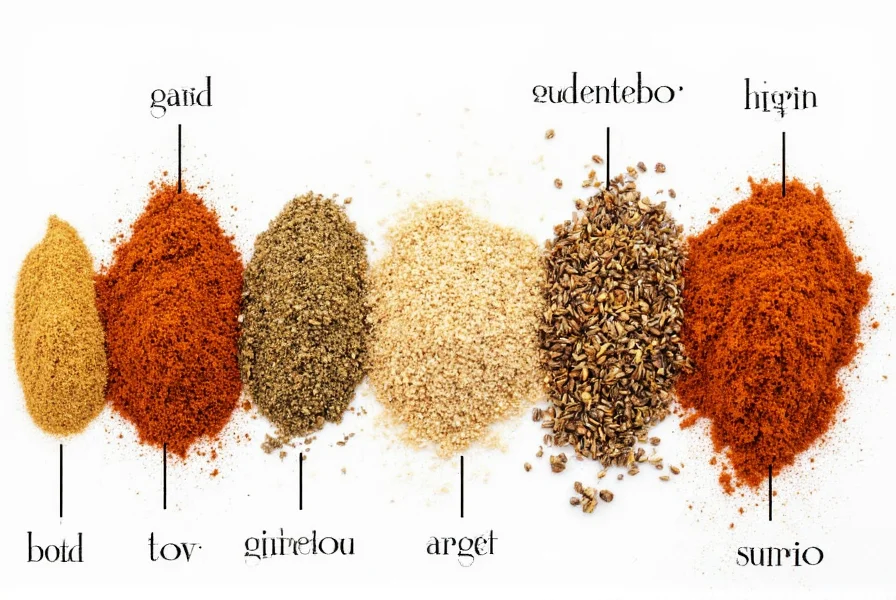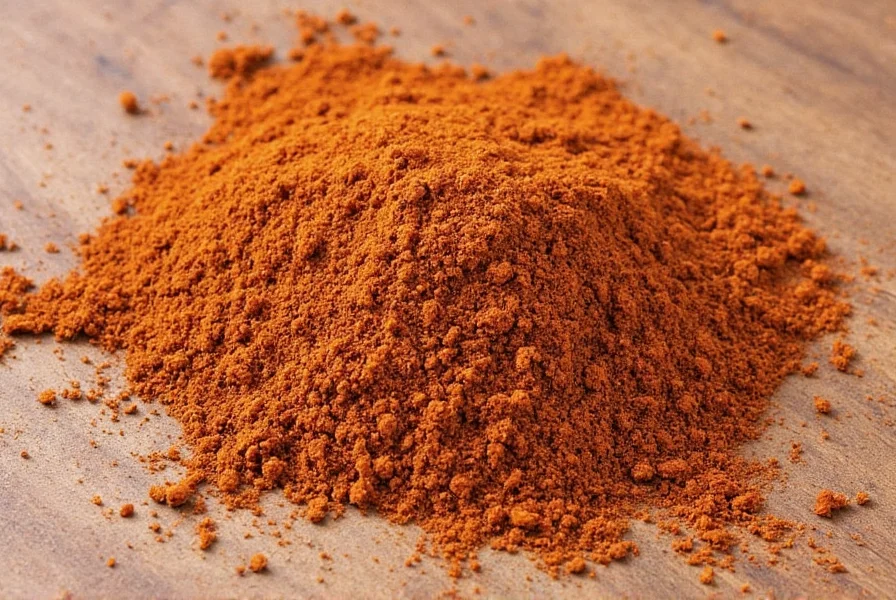Running out of cumin mid-recipe doesn't have to ruin your cooking experience. Understanding which spices can effectively replace cumin's distinctive earthy, warm, and slightly citrusy flavor is essential for any home cook. Cumin's unique profile makes it challenging to replicate perfectly, but several alternatives can maintain your dish's integrity when used correctly.
Understanding Cumin's Flavor Profile
Cumin brings a distinctive earthy warmth with subtle citrus notes and a hint of bitterness to dishes. Its complex flavor works particularly well in Mexican, Indian, Middle Eastern, and North African cuisines. When seeking a cumin substitute spice, consider which elements of its flavor are most important for your specific recipe.
Top Cumin Substitute Options
Not all substitutes work equally well in every application. The best cumin replacement depends on your specific recipe and what flavor elements you need to preserve.
Coriander Seeds
Coriander offers the closest single-spice alternative to cumin with its citrusy, floral notes. Use 1.5 times the amount of cumin called for in your recipe. Coriander works particularly well as a cumin substitute for Indian cooking where both spices commonly appear together. The main difference is coriander lacks cumin's earthiness, so you might want to add a pinch of smoked paprika to compensate.

Chili Powder
For Mexican dishes specifically, chili powder makes an excellent cumin substitute as it often contains cumin already. Use a 1:1 ratio when replacing ground cumin. Standard chili powder blends typically include cumin, garlic powder, oregano, and paprika, creating a flavor profile that works well in tacos, enchiladas, and chili. This is one of the best cumin substitutes for chili recipes where authenticity matters.
Paprika and Coriander Blend
Combine equal parts paprika and coriander for a versatile cumin replacement that works across multiple cuisines. The paprika adds earthiness while coriander contributes the citrus notes. This blend serves as an effective cumin substitute for Mexican food and works surprisingly well in Middle Eastern dishes too. Use the same amount as the cumin called for in your recipe.
| Substitute | Ratio to Cumin | Best For | Limitations |
|---|---|---|---|
| Coriander Seeds | 1.5:1 | Indian recipes, stews | Lacks earthiness, milder flavor |
| Chili Powder | 1:1 | Mexican dishes, chili | Additional flavors may alter recipe |
| Paprika + Coriander | 1:1 blend | General purpose cooking | Not authentic to any single cuisine |
| Garam Masala | 1:1 | Indian curries | Complex flavor may overpower |
Specialized Substitutes for Specific Cuisines
Different culinary traditions require tailored approaches when replacing cumin. Understanding these nuances helps maintain authenticity in your dishes.
Mexican Cuisine Alternatives
When making tacos, enchiladas, or chili, chili powder remains the top choice as a cumin substitute spice. Many commercial chili powders already contain cumin, making them ideal replacements. For a homemade alternative, combine equal parts paprika, garlic powder, and oregano. This creates what many consider the best cumin substitute for chili without altering the dish's fundamental character.
Indian Cooking Solutions
Garam masala works surprisingly well as a cumin replacement in Indian recipes since it typically contains cumin along with other complementary spices like cardamom, cloves, and cinnamon. Use it in a 1:1 ratio. For more authentic results, try a blend of coriander, turmeric, and a pinch of cayenne. This combination serves as an effective cumin substitute for Indian cooking when cumin isn't available.
What NOT to Use as a Cumin Substitute
Certain spices create undesirable results when used as cumin replacements. Avoid using curry powder as a direct substitute since its complex blend often includes turmeric (which will change your dish's color) and other strong flavors that may overpower your recipe. Similarly, avoid using cayenne or other hot peppers alone, as they provide heat without cumin's distinctive earthy notes.
Creating Your Own Cumin Substitute Blend
For the most versatile cumin replacement, create a homemade blend using ingredients you likely have in your pantry. Combine:
- 2 parts coriander
- 1 part paprika
- ½ part garlic powder
- ¼ part cayenne (optional for heat)
This mixture works as an excellent ground cumin alternative across multiple cuisines. Store it in an airtight container for up to three months. When using this blend as a cumin substitute without coriander, simply increase the paprika slightly to maintain the earthy flavor profile.

Storage Tips for Substitute Spices
Proper storage maintains the potency of your substitute spices. Keep all spices in airtight containers away from heat and light. Whole spices like coriander seeds retain their flavor longer than ground versions—up to two years versus six months for ground spices. For the best results when using a cumin substitute spice, toast whole seeds before grinding to maximize their flavor potential.
Final Considerations
The ideal cumin replacement depends on your specific recipe and what flavor elements matter most. When choosing what spice to use instead of cumin, consider whether earthiness, warmth, or citrus notes are most critical to your dish. Don't be afraid to experiment with small batches first, especially when cooking for others. Remember that while no single spice perfectly replicates cumin, understanding these alternatives ensures your cooking never has to stop just because you're out of this essential spice.
What is the best cumin substitute for chili?
Chili powder makes the best cumin substitute for chili recipes since most commercial blends already contain cumin along with complementary spices like garlic powder and oregano. Use it in a 1:1 ratio for optimal results without significantly altering your dish's flavor profile.
Can I substitute coriander for cumin in Indian recipes?
Yes, coriander works well as a cumin substitute in Indian cooking, but use 1.5 times the amount of cumin called for in your recipe. Since both spices commonly appear together in Indian cuisine, this substitution maintains authenticity better than other options. For richer flavor, add a pinch of smoked paprika to compensate for cumin's earthiness.
Is there a cumin substitute without coriander?
Yes, for those seeking a cumin substitute without coriander, try using chili powder for Mexican dishes or a blend of equal parts paprika and garlic powder for general cooking. In Indian recipes, garam masala can work as a direct 1:1 replacement since it typically contains cumin among other complementary spices.
How much paprika equals one teaspoon of cumin?
When using paprika as part of a cumin substitute blend, use equal parts paprika and coriander to replace cumin. For a single-spice replacement, you would need to use slightly more paprika (about 1.25 teaspoons of paprika for every teaspoon of cumin), but this won't fully replicate cumin's complex flavor profile.
Can I use curry powder instead of cumin?
Curry powder can work as a cumin substitute in some applications, but use only half the amount called for since curry powder contains multiple strong spices. It works best in Indian or Southeast Asian dishes but will change the color of your dish due to turmeric content. For a more precise replacement, consider other options like coriander or chili powder depending on your cuisine.











 浙公网安备
33010002000092号
浙公网安备
33010002000092号 浙B2-20120091-4
浙B2-20120091-4